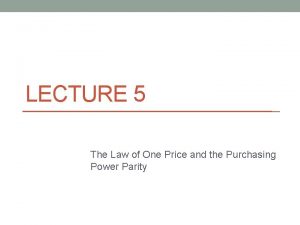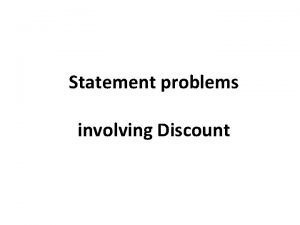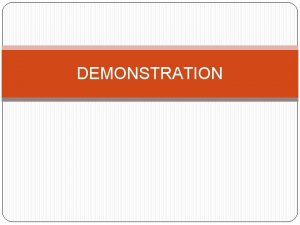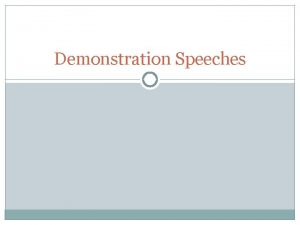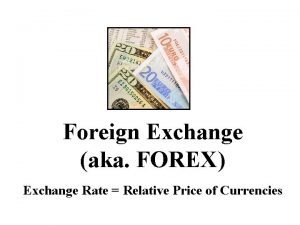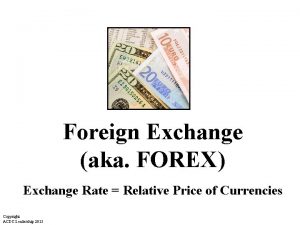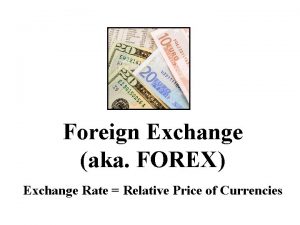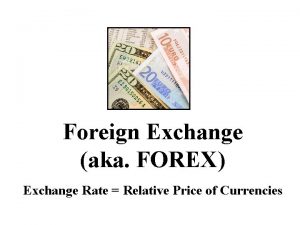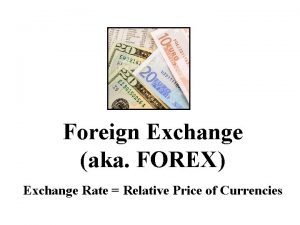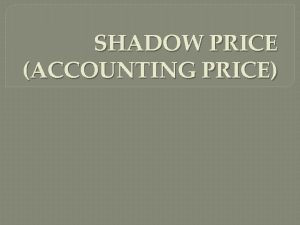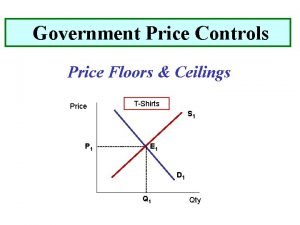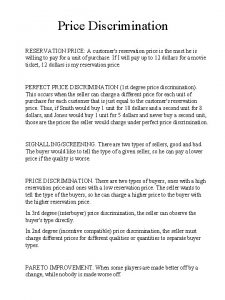Exchange Rate Demonstration Exchange Rate The price of





















- Slides: 21

Exchange Rate Demonstration

Exchange Rate • The price of one country’s currency measured in terms of another country’s currency • ex. $/Pound or Pound/$

Why do people want Foreign Currency? • The want to buy foreign goods • They want to buy foreign financial assets • The want to speculate

Actors in the Foreign Exchange Market • Hedgers (Traders) • Arbitrageur • Speculators • Central Bankers

The Foreign Exchange Market Exchange rate Peso/$ D S Supply of Dollars by people who want pesos Demand for Dollars by people who have pesos Foreign exchange (dollars)

Currency Depreciation and Appreciation • Currency depreciation is an increase in the number of units of a particular currency needed to purchase one unit of foreign exchange • Currency appreciation is a decrease in the number of units of a particular currency needed to purchase one unit of foreign exchange

Changes in the Equilibrium Exchange Rate Exchange rate Peso/$ D Supply of Dollars by people who want pesos S S’ $ -depreciation Peso- appreciation Demand for Dollars by people who have pesos Foreign exchange (dollars)

Purchasing Power Parity • The purchasing power parity theory predicts that exchange rates between two national currencies will adjust in the long run to reflect price-level differences in the two countries • example: If a bike cost $100 in US, and 300 pesos in Mexico, PPP predicts that the Peso/$ exchange = 3. If not arbitrage would be profitable (buy bikes in Mexico and sell in US)


A 1 country 2 US 3 Argentina 4 formulas B C D E F under (-) actual valued In local in US implied exchange against dollar currency dollars PPP rate 3. 54 11. 5 3. 30 3. 25 b 3/e 3 b 3/c 2 3. 49 -7% (d 3 e 3)/e 3

Why does PPP Fail? • Non-Traded goods • Tariffs and Quotas • Productivity differentials • People demand foreign currency for reasons other then to buy traded goods

Exchange Rate Regimes • Flexible (Floating) exchange rates. • Fixed exchange rates. – Currency Board – Monetary Union • Managed Float (Dirty Float) exchange rates.

The Central Bank Can Intervene to Maintain Exchange Rates Exchange rate $/pound D’ D’’ S Foreign exchange (pounds)

Currency Crisis Exchange rate Baht/$ 52 D’ D S 25 Foreign exchange ($)

225 Asian Currencies vs. U. S. Dollar 200 175 THB/USD 150 MYR/USD PHP/USD 125 KRW/USD TWD/USD SGD/USD 100 75 50 Jan-95 Jul-95 Jan-96 Jul-96 Jan-97 Jul-97 Jan-98 Jul-98 Jan-99 Jul-99

Problems • Foreigners can’t make their dollar denominated debt payments • Can’t afford foreign goods • Shopping opportunities

Currency Unions • Currency Unions are the adoptions of a single currency among several countries – European Union - currency (Euro) – The United States - currency (Dollar)

Actors in the Foreign Exchange Market • Hedgers (Traders)-A person who is buying a product or services from another country and is required to pay for it in that country’s currency • Arbitrageur—A person who takes advantage of temporary geographic differences in the exchange rate by simultaneously purchasing a currency in one market and selling it in another market • Speculators—A person who buys or sells foreign exchange in hopes of profiting from fluctuations in the exchange rate over time • Central Bankers- A government institution which can influence the exchange rate

Exchange Rates • Spot Market- The market for currency, where the contract negotiated is carried out immediately. • Forward Market- A contract is negotiated for the exchange of currency 3, 6, 9 months or more in the future. That is to say the rate is negotiated today for a transaction that will take place in the future.

Exchange Rate Regimes • Flexible (floating) exchange rates are determined solely by the forces of supply and demand without government intervention • Fixed exchange rates are pegged by a central banks and it conducts ongoing purchases and sales of currencies to defend the peg. • Managed Float (Dirty), there is an implicit or explicit target range for the exchange rate and the central bank defends it.

Changing the Value of Currency • Currency devaluation is an increase in the official pegged price of foreign exchange in terms of the domestic currency • Currency revaluation is a reduction in the official pegged price of foreign exchange in terms of the domestic currency
 Addison currency exchange
Addison currency exchange Ito ay kilala rin sa katawagan bilang maximum price policy
Ito ay kilala rin sa katawagan bilang maximum price policy Law of one price and purchasing power parity
Law of one price and purchasing power parity Marked price-selling price=
Marked price-selling price= What is hire purchase system
What is hire purchase system Define strategic sourcing
Define strategic sourcing Price discovery and price determination
Price discovery and price determination Pearl exchange activity
Pearl exchange activity Gas exchange key events in gas exchange
Gas exchange key events in gas exchange Hát kết hợp bộ gõ cơ thể
Hát kết hợp bộ gõ cơ thể Lp html
Lp html Bổ thể
Bổ thể Tỉ lệ cơ thể trẻ em
Tỉ lệ cơ thể trẻ em Voi kéo gỗ như thế nào
Voi kéo gỗ như thế nào Glasgow thang điểm
Glasgow thang điểm Hát lên người ơi
Hát lên người ơi Các môn thể thao bắt đầu bằng tiếng đua
Các môn thể thao bắt đầu bằng tiếng đua Thế nào là hệ số cao nhất
Thế nào là hệ số cao nhất Các châu lục và đại dương trên thế giới
Các châu lục và đại dương trên thế giới Cong thức tính động năng
Cong thức tính động năng Trời xanh đây là của chúng ta thể thơ
Trời xanh đây là của chúng ta thể thơ Cách giải mật thư tọa độ
Cách giải mật thư tọa độ


